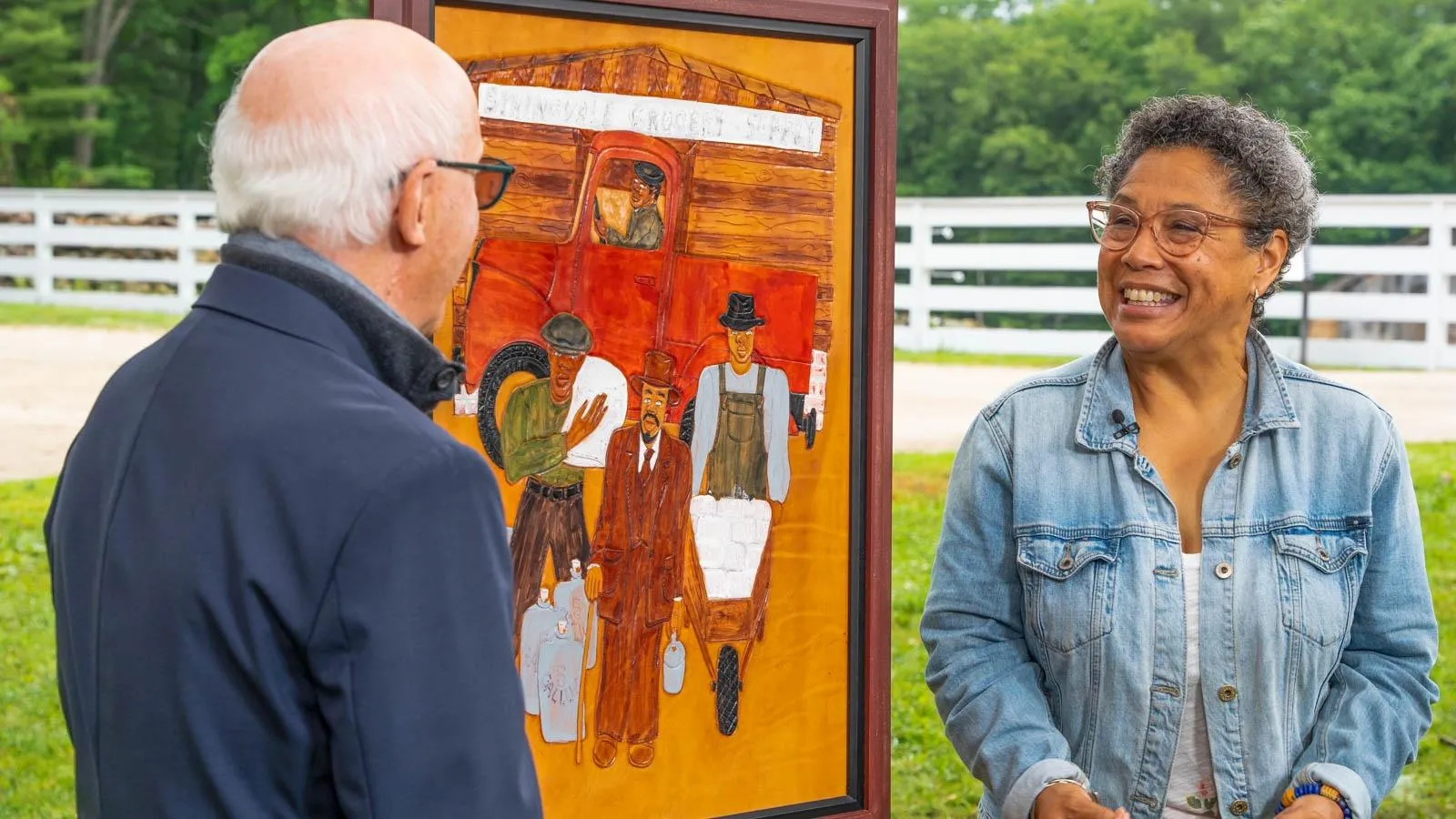GUEST: My dad was on a sabbatical in Denmark back in early '60s-- 1964, '65. And they fell in love with Danish furniture and picked up a whole set of furniture, of which this coffee table and the chair are a couple of examples of. It's mostly just been in the family since I was basically five, so I didn't really think much about it, except my dad would always say, "Oh, this is Poul Kjaerholm." And I was, like, "Okay." (chuckles) Uh, and really just kind of interested in what, over almost 60 years now, like, what is this?
APPRAISER: Well, you're absolutely right. These were designed by Poul Kjaerholm, which is one of Denmark's most preeminent, uh, furniture maker and designers of the mid-century period, working from about 1950 up until his death in 1980. He was born in Denmark in 1929, studied at the Danish School of Arts and Crafts, graduating in 1952. And he studied under Hans Wegner, one of the most famous and well-known cabinetmakers working in Denmark. So Poul Kjaerholm studied a lot of traditional Danish cabinetmaking techniques, and most of the cabinetmakers at that period were working in woods like teak and walnut. What really separated what Kjaerholm did is that he, he was looking more towards the, the European continent and what was happening in the Bauhaus...
GUEST: Mm-hmm.
APPRAISER: ...at the early part of the 20th century, and was using more modern materials like steel and marble and glass and leather for his designs. He was trying to hold true to a lot of Danish respect for materials while updating the look. So creating a totally different aesthetic for Danish mid-century design. Kjaerholm won a number of prizes and exhibited widely during his life. In 1957 and 1960, he won grand prizes at the Milan Triennale, and in 1958 was awarded the prestigious Lunning Prize, awarded to, uh, Scandinavian design. So very well-known and very well-respected. What you have here is the PK61 coffee table that was designed in 1955. These are among his earliest designs, and he collaborated with the Danish manufacturer Ejvind Kold Christensen to produce his early designs. Later, after his death, after 1980, those designs became produced by Fritz Hansen. And the market really prefers the pieces, the early p, pieces from the 1950s and 1960s, which you have here. Both matte-chromed frames on the chair and the table bear the E. Kold Christensen stamp. What's really wonderful about the PK61 coffee table that you have is, it has its original fossil marble top. It has all these amazing inclusions of fossils that have been there for millions of years. So even though it's this very modern table, it's using this ancient piece of stone that creates a lot of visual interest. It is a great kind of conversation piece. And tell me a little bit about, about the chair.
GUEST: The chair was always very comfortable, and I probably sat in it too much, because my dad had to replace the leather cover.
APPRAISER: Probably the design that he's most well-known for today is this chair. So you see a lot of them on the market. With Scandinavian furniture, the originality of the materials is really important to collectors. So anyone who's out there that has a piece of Danish modern or Scandinavian modern furniture from this period, even if the leather is sometimes tattered, it so, it may be good to hold on to that, because collectors can sometimes get that repaired. It's a very faithful reproduction to the original style of the stitching that was on the chair. So they obviously used that as a template. Because they're both early E. Kold Christensen production, the coffee table at auction would be valued between $6,000 and $8,000. And the chair, because it's been re-covered, would be valued at $2,000 to $3,000.
GUEST: Wow. Uh-huh.
APPRAISER: If the chair had its original leather still intact, we'd be looking at probably $3,000 to $5,000.
GUEST: Okay, wow. All right. (laughs) That's a lot more than I would've thought. Wow, okay. Whew, good thing this is so heavy. Nobody can really walk out with it. (laughs)











